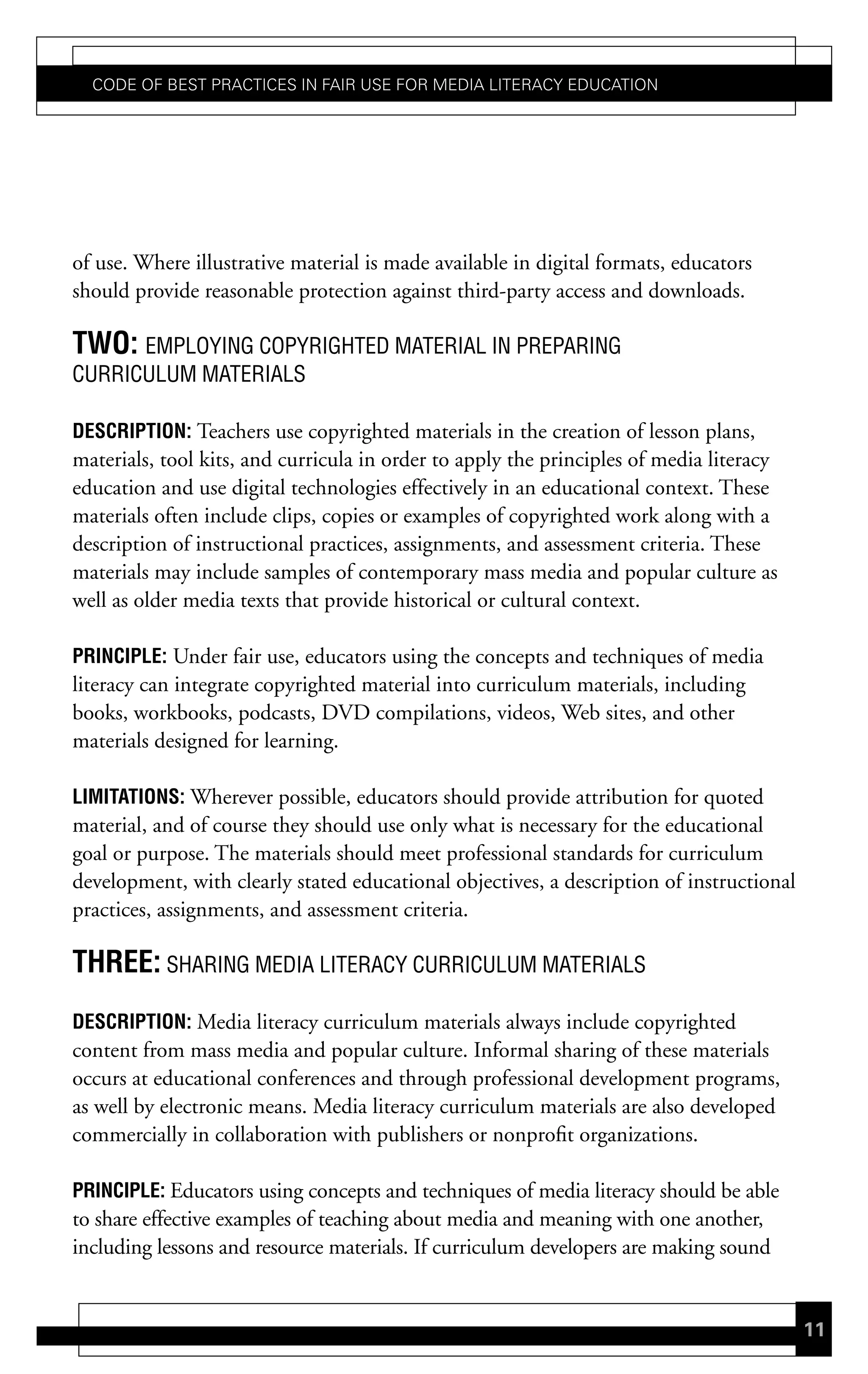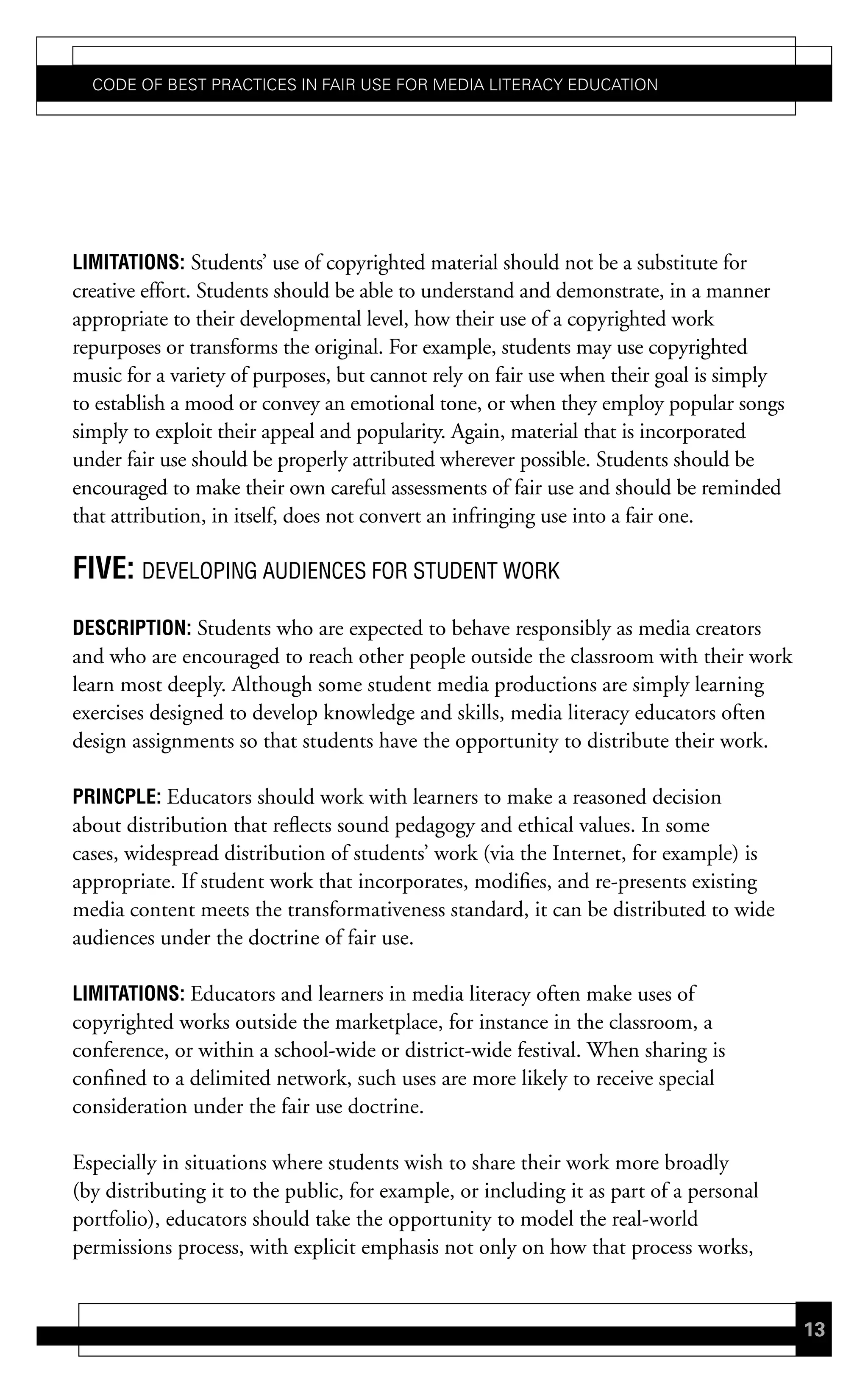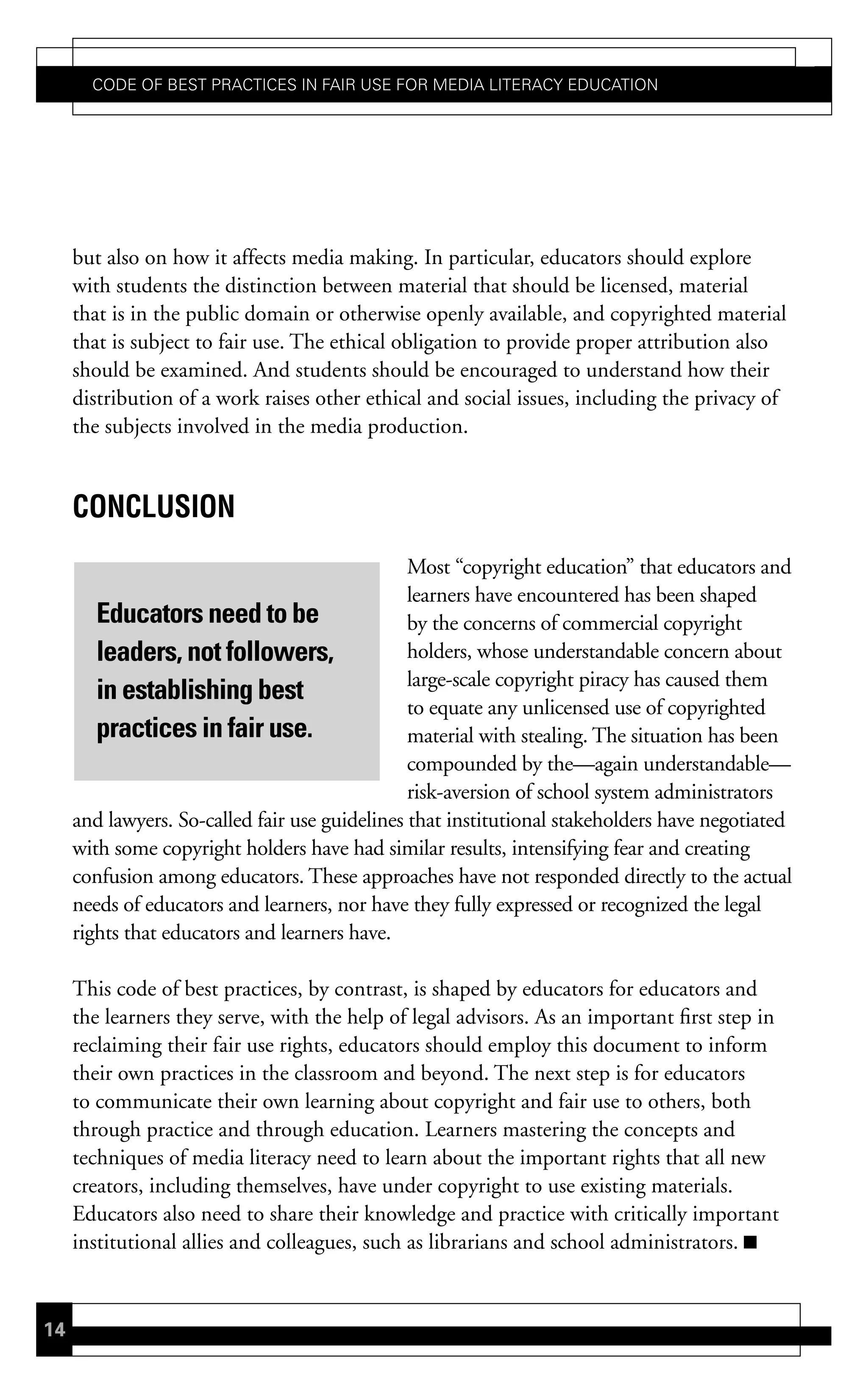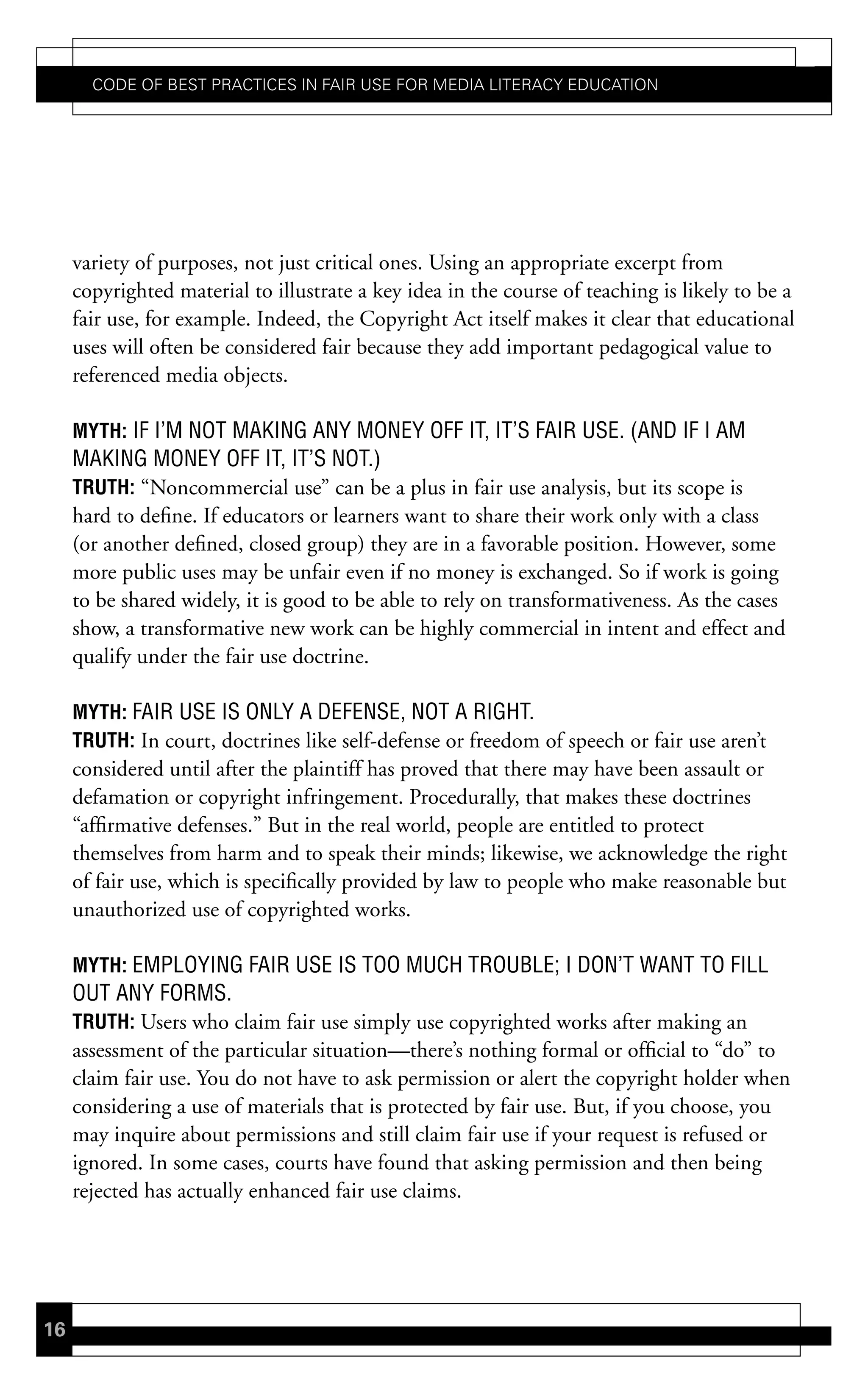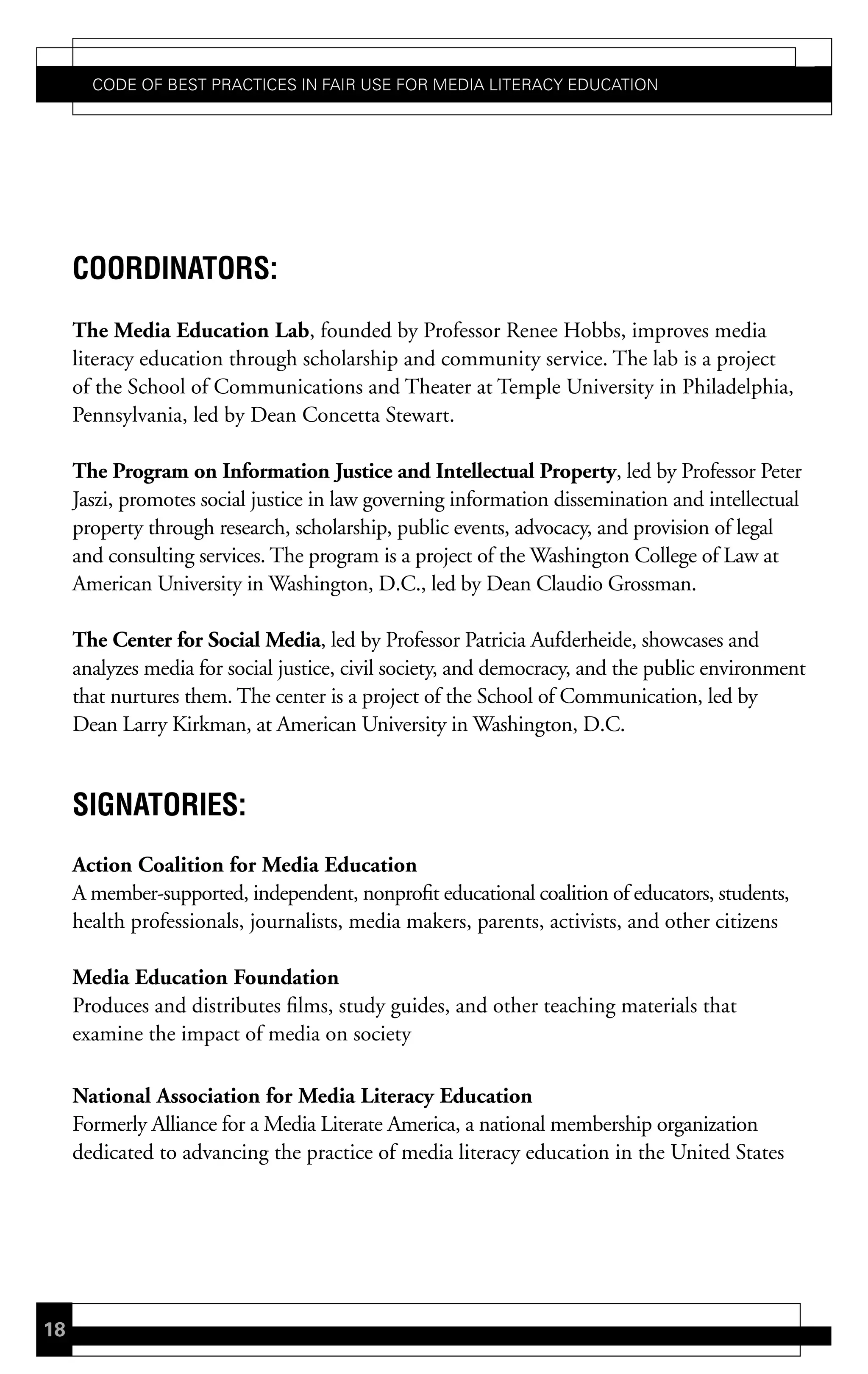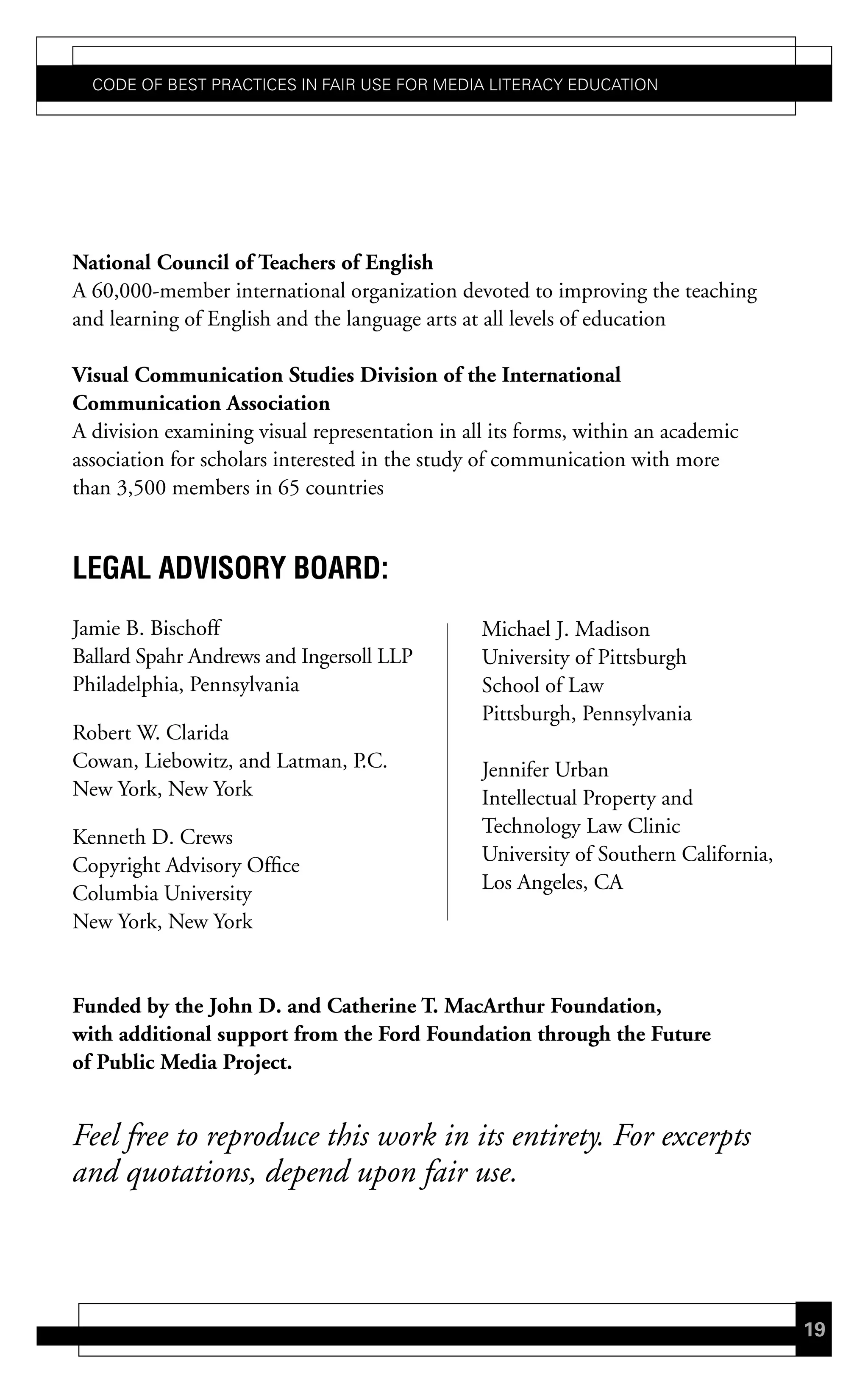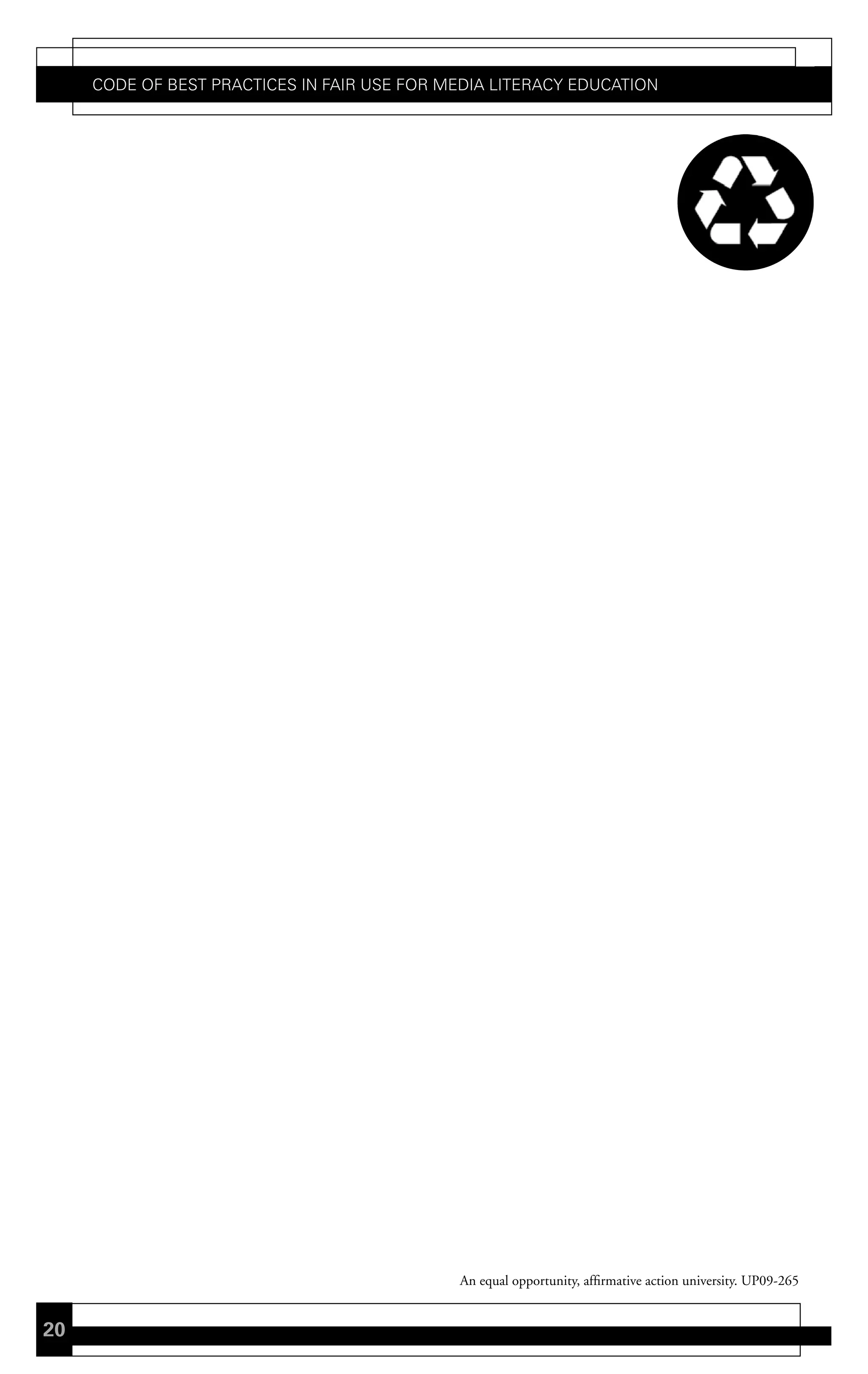This document provides a code of best practices for educators using fair use of copyrighted materials for media literacy education. It was created by a coalition of educational organizations through a collaborative process. The code identifies five principles to help educators interpret fair use rights in common educational situations involving media literacy. It aims to address confusion about copyright among educators by clarifying acceptable fair use practices for teaching and learning.

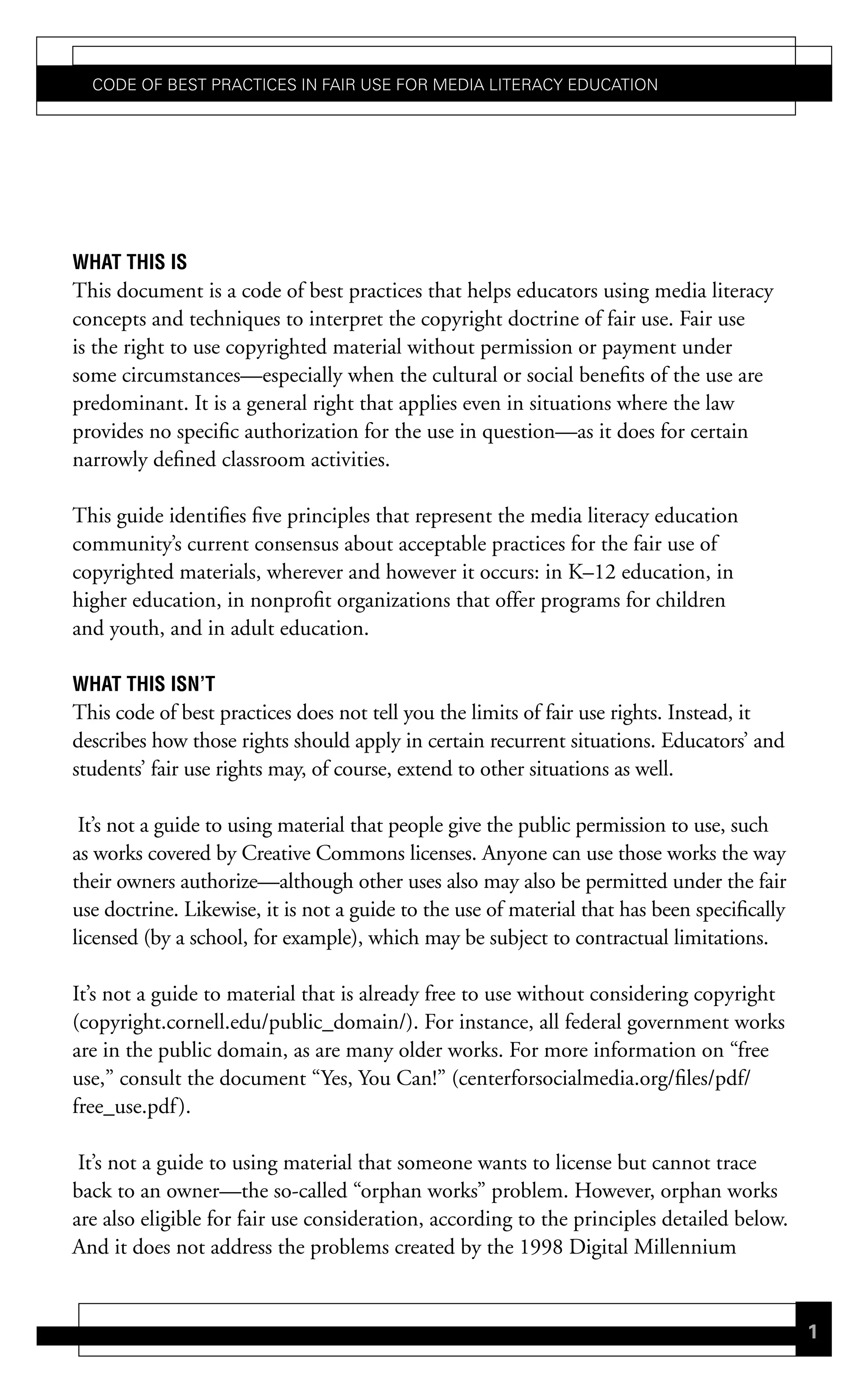
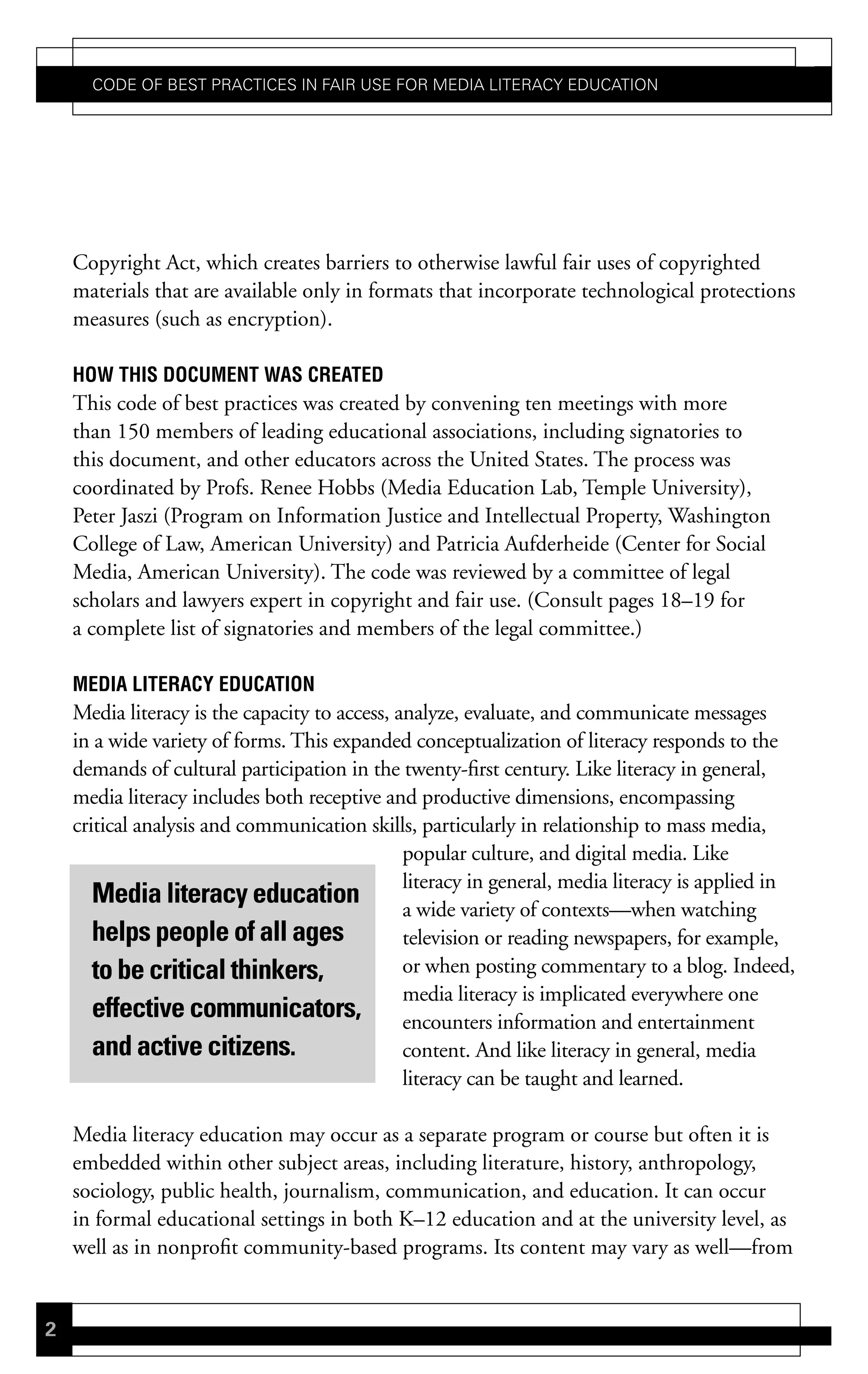
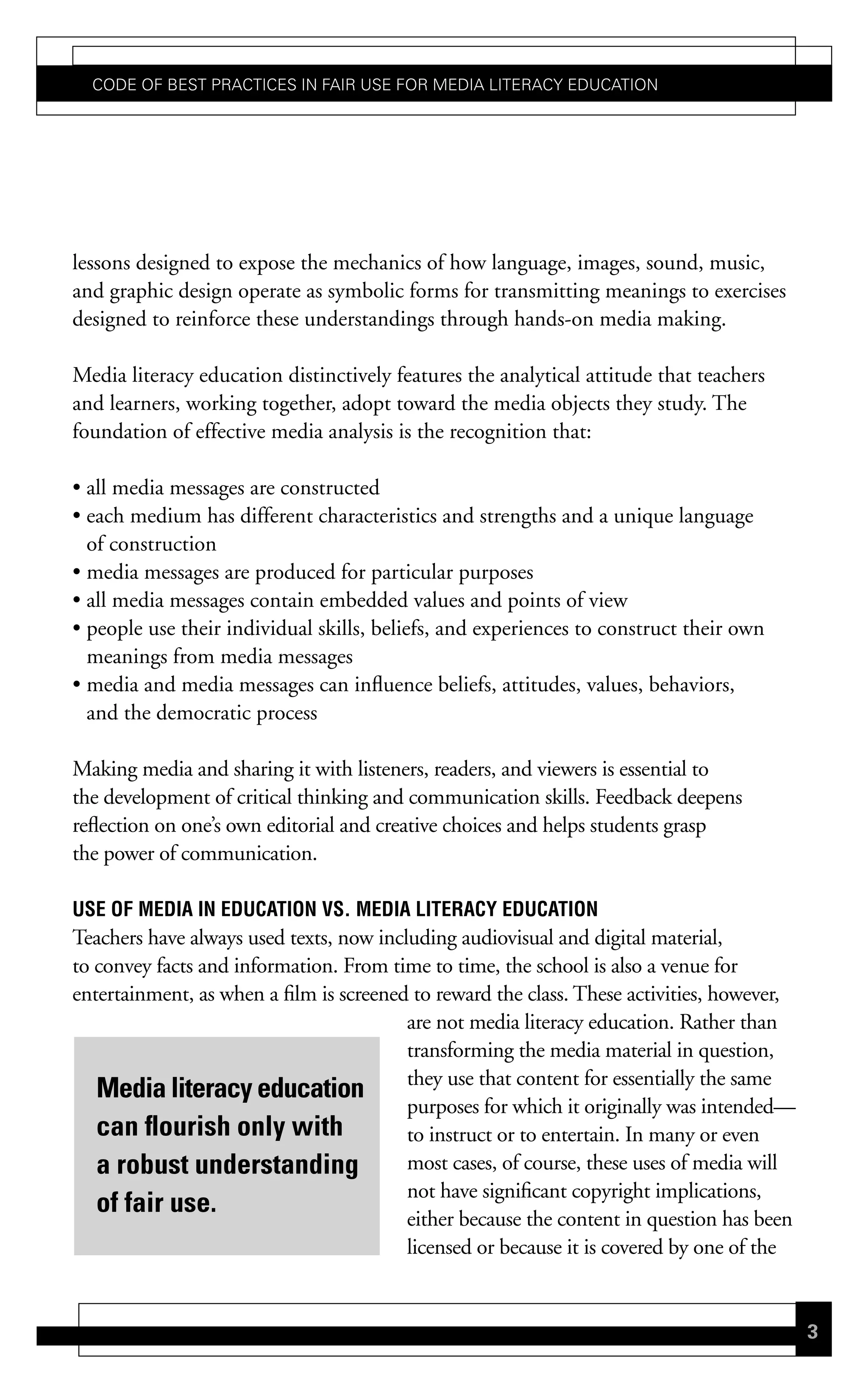
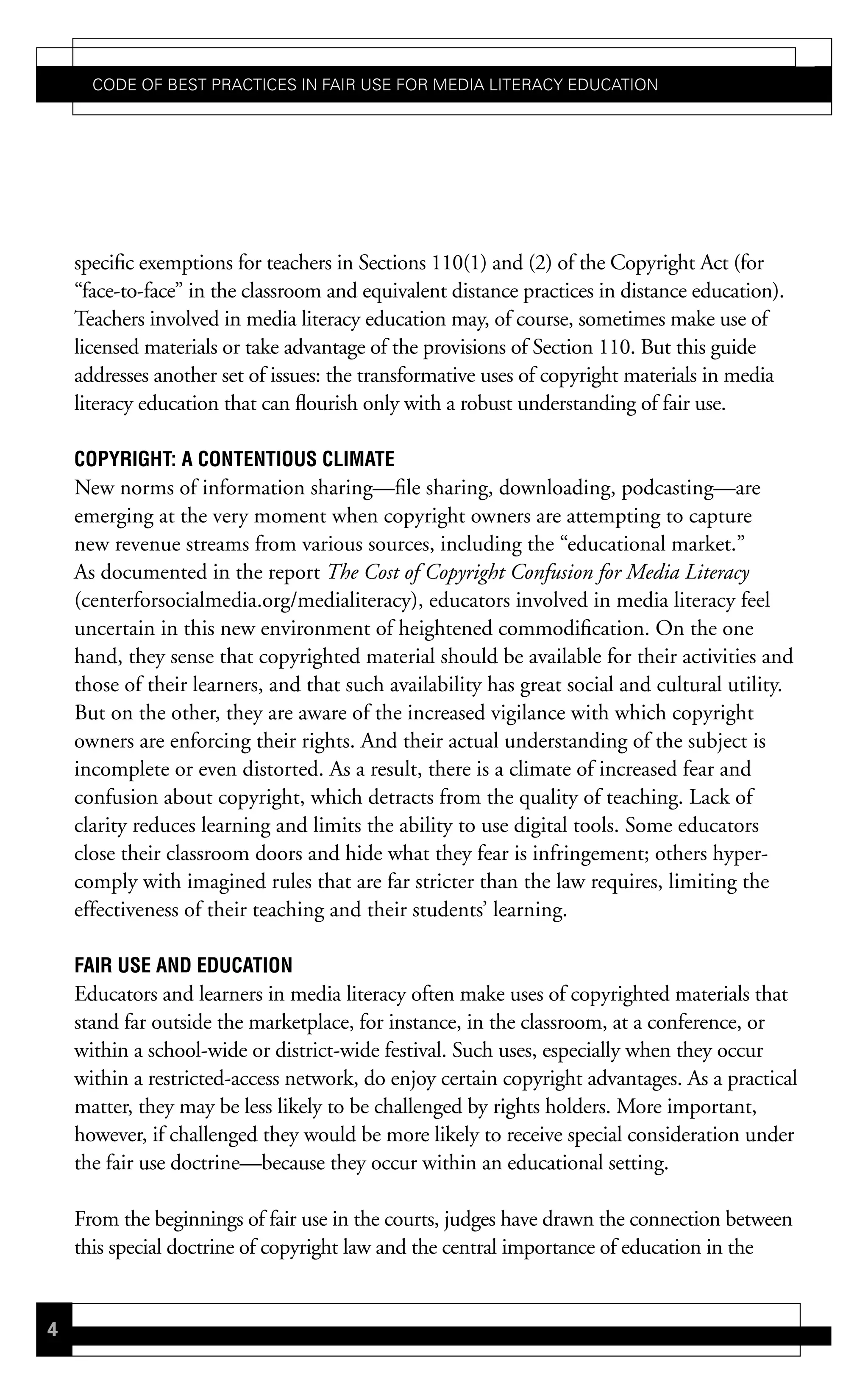

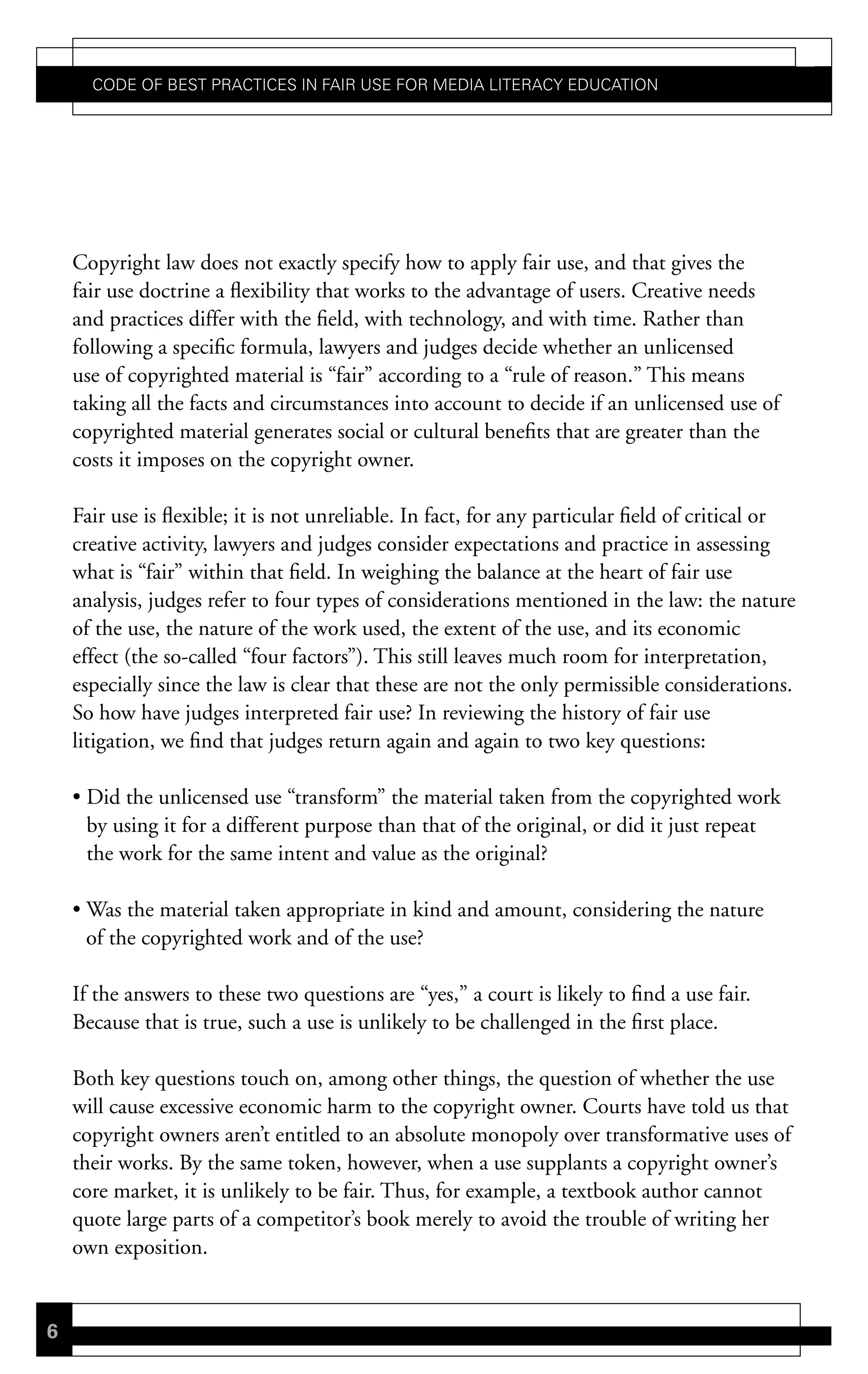
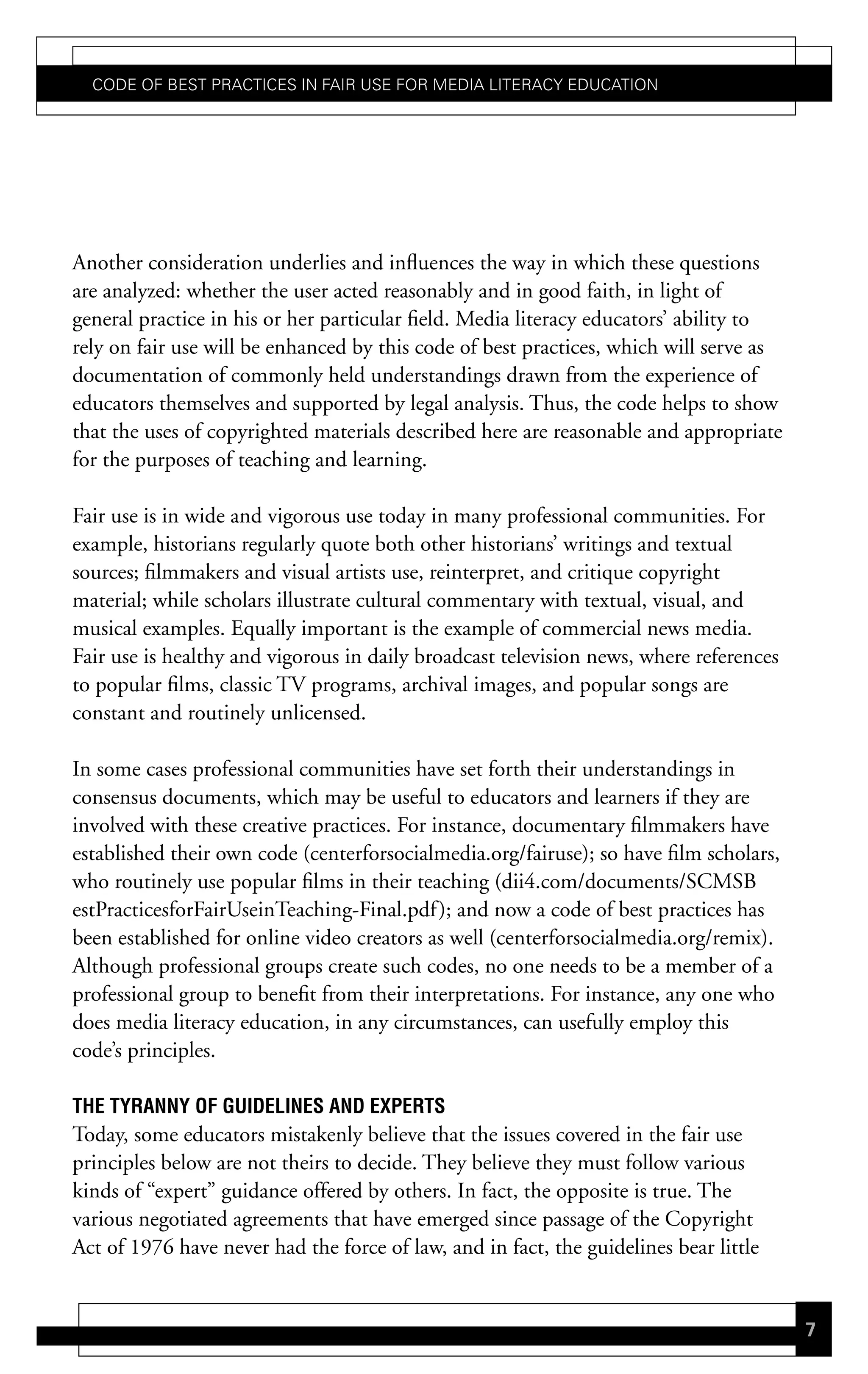
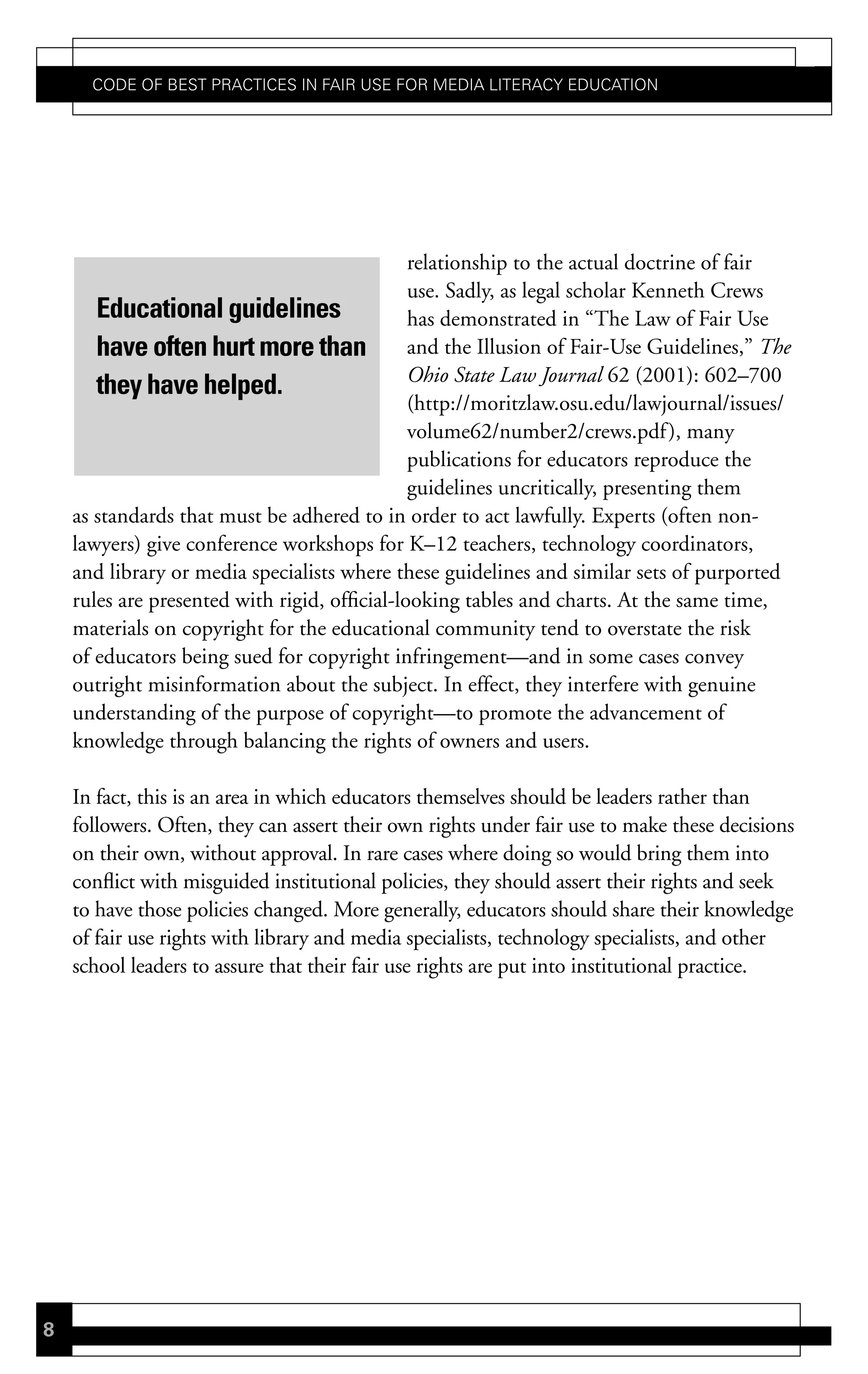
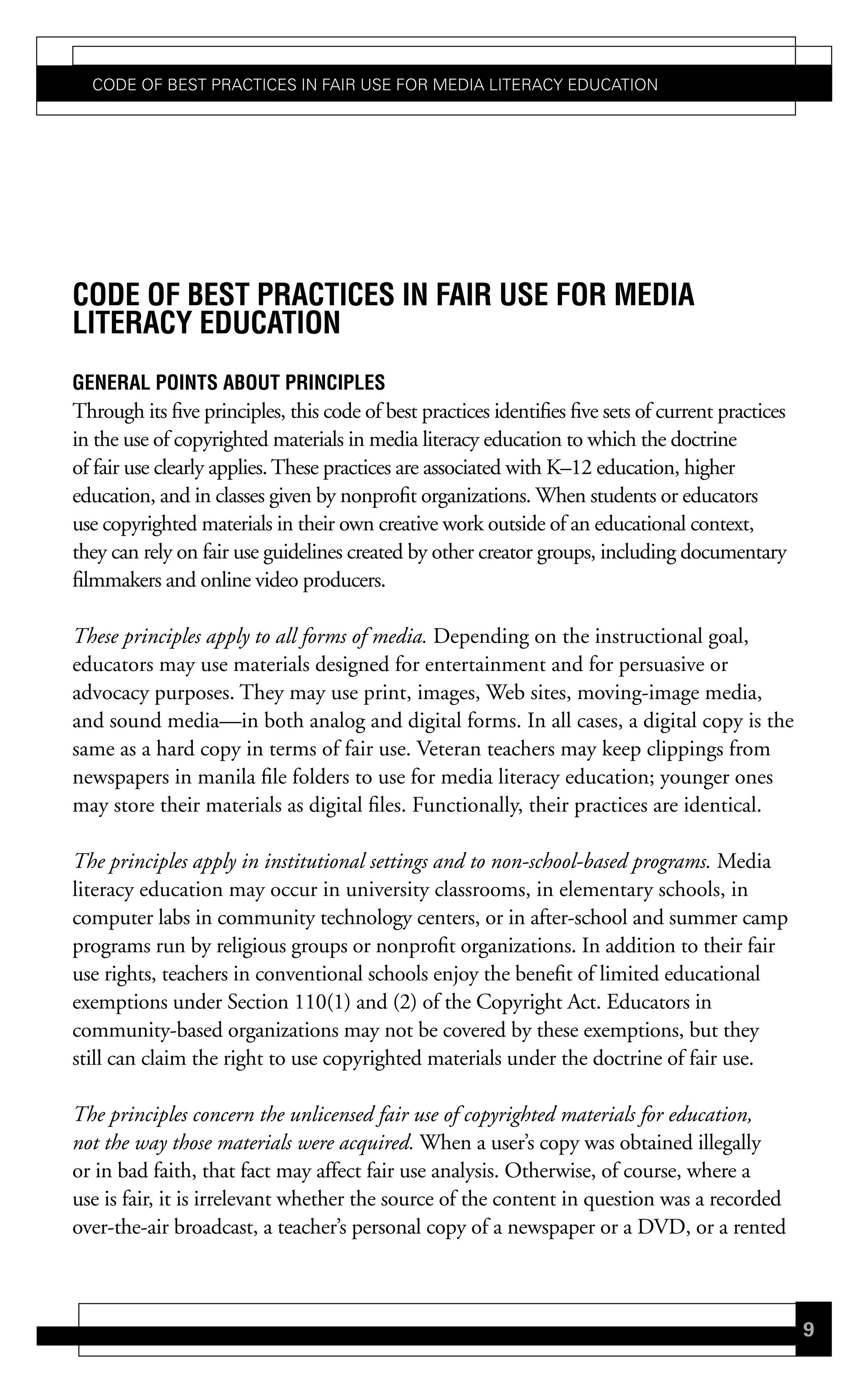
![Code of Best PraCtiCes in fair Use for Media LiteraCy edUCation
or borrowed piece of media. Labels on commercial media products proclaiming that
they are “licensed for home [or private or educational or noncommercial] use only” do
not affect in any way the educator’s ability to make fair use of the contents—in fact,
such legends have no legal effect whatsoever. (If a teacher is using materials subject to
a license agreement negotiated by the school or school system, however, she may be
bound by the terms of that license.)
The principles are all subject to a “rule of proportionality.” Educators’ and students’ fair
use rights extend to the portions of copyrighted works that they need to accomplish
their educational goals—and sometimes even to small or short works in their entirety.
By the same token, the fairness of a use depends, in part, on whether the user took
more than was needed to accomplish his or her legitimate purpose. That said, there are
no numerical rules of thumb that can be relied upon in making this determination.
PrinciPLes
one: EMPLOYING COPYRIGHTED MATERIAL IN MEDIA LITERACY LESSONS
descriPtion: Educators use television news, advertising, movies, still images, newspaper
and magazine articles, Web sites, video games, and other copyrighted material to build
critical-thinking and communication skills. Common instructional activities include
comparison-contrast analysis, deconstruction (close analysis) of the form and content of a
message, illustration of key points, and examination of the historical, economic, political,
or social contexts in which a particular message was produced and is received.
PrinciPLe: Under fair use, educators using the concepts and techniques of media
literacy can choose illustrative material from the full range of copyrighted sources
and make them available to learners, in class, in workshops, in informal mentoring
and teaching settings, and on school-related Web sites.
Limitations: Educators should choose material that is germane to the project or
topic, using only what is necessary for the educational goal or purpose for which it
is being made. In some cases, this will mean using a clip or excerpt; in other cases,
the whole work is needed. Whenever possible, educators should provide proper
attribution and model citation practices that are appropriate to the form and context
10](https://image.slidesharecdn.com/bestpractices-110702075351-phpapp01/75/Best-practices-11-2048.jpg)
